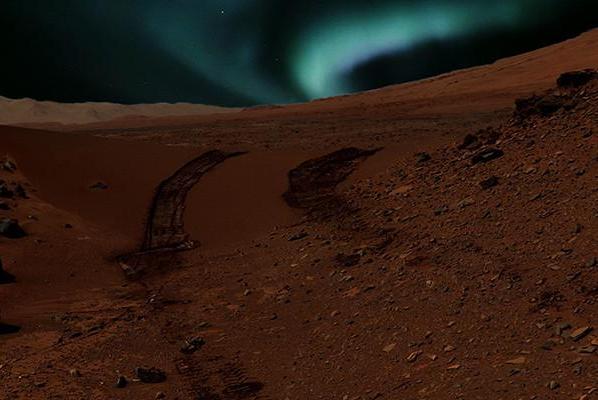Study Illuminates Similarities Between Mars, Earth Aurorae

GRENOBLE, France, May 27 (UPI) — Aurora-like disturbances in Mars’ upper atmosphere have previously been detected by space probes orbiting the Red Planet.
But those probes weren’t monitoring wavelengths in the visible portion of the spectrum, so it wasn’t clear to what extent a Martian aurora resembled the light shows found at Earth’s poles.
New research, however, suggests aurorae on Mars are also visible to the naked eye.
A team of international researchers used advanced mathematical models and a simulation device called the Planeterrella to predict was a Martian aurora might look like. The experiments show the primary color in a Martian aurora is deep blue — with hints of green and red. Mars’ upper atmosphere is mostly made up of carbon dioxide.
Earth’s polar aurorae are mostly green and red, thanks to our atmosphere’s abundance of oxygen, but also feature purples and blues, the result of ionized molecular nitrogen.
The Planeterrella that helped scientists mimic a Martian aurora is a polar light simulation device that traps an electromagnetically charged array of gases in a vacuum to replicate the combination of a planet’s upper atmosphere and magnetic field. An electrical discharge sparks the laboratory aurora, just as a barrage of solar particles might instigate a real one.
In this case, the discharge caused the box of Martian atmosphere to glow blue.
“The present study shows that, on Mars, aurorae also occur in the visible range,”scientists wrote in a press release. “Aurorae occur when electrically charged particles of solar origin are driven down along the local magnetic field lines, where they enter the planetary atmosphere and excite its atoms and molecules.”
The work — which was conducted in France, but also featured the efforts of NASA researchers and Finnish scientists at Aalto University — was published in the journal Planetary and Space Science.





